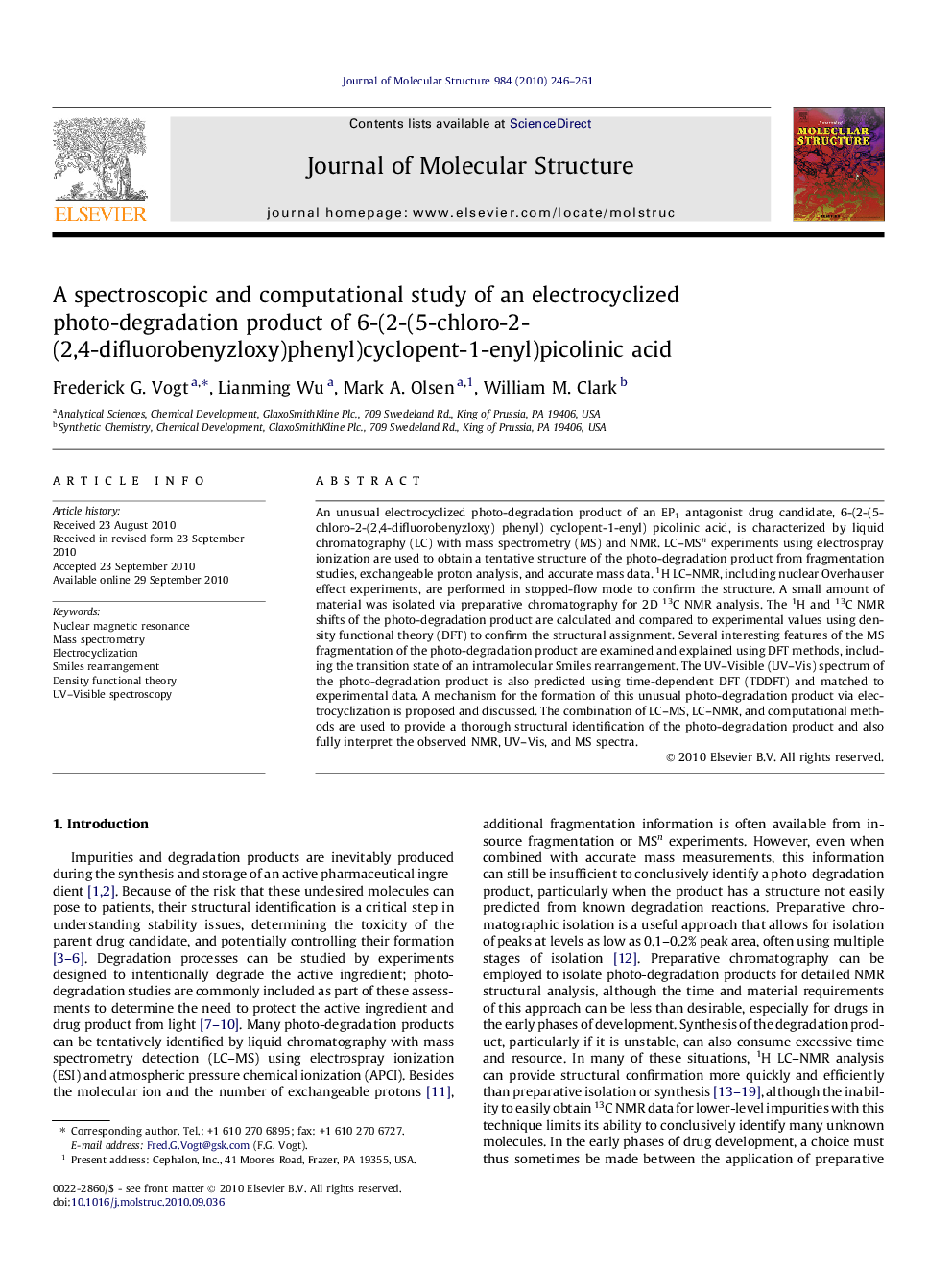| Article ID | Journal | Published Year | Pages | File Type |
|---|---|---|---|---|
| 1406458 | Journal of Molecular Structure | 2010 | 16 Pages |
An unusual electrocyclized photo-degradation product of an EP1 antagonist drug candidate, 6-(2-(5-chloro-2-(2,4-difluorobenyzloxy) phenyl) cyclopent-1-enyl) picolinic acid, is characterized by liquid chromatography (LC) with mass spectrometry (MS) and NMR. LC–MSn experiments using electrospray ionization are used to obtain a tentative structure of the photo-degradation product from fragmentation studies, exchangeable proton analysis, and accurate mass data. 1H LC–NMR, including nuclear Overhauser effect experiments, are performed in stopped-flow mode to confirm the structure. A small amount of material was isolated via preparative chromatography for 2D 13C NMR analysis. The 1H and 13C NMR shifts of the photo-degradation product are calculated and compared to experimental values using density functional theory (DFT) to confirm the structural assignment. Several interesting features of the MS fragmentation of the photo-degradation product are examined and explained using DFT methods, including the transition state of an intramolecular Smiles rearrangement. The UV–Visible (UV–Vis) spectrum of the photo-degradation product is also predicted using time-dependent DFT (TDDFT) and matched to experimental data. A mechanism for the formation of this unusual photo-degradation product via electrocyclization is proposed and discussed. The combination of LC–MS, LC–NMR, and computational methods are used to provide a thorough structural identification of the photo-degradation product and also fully interpret the observed NMR, UV–Vis, and MS spectra.
